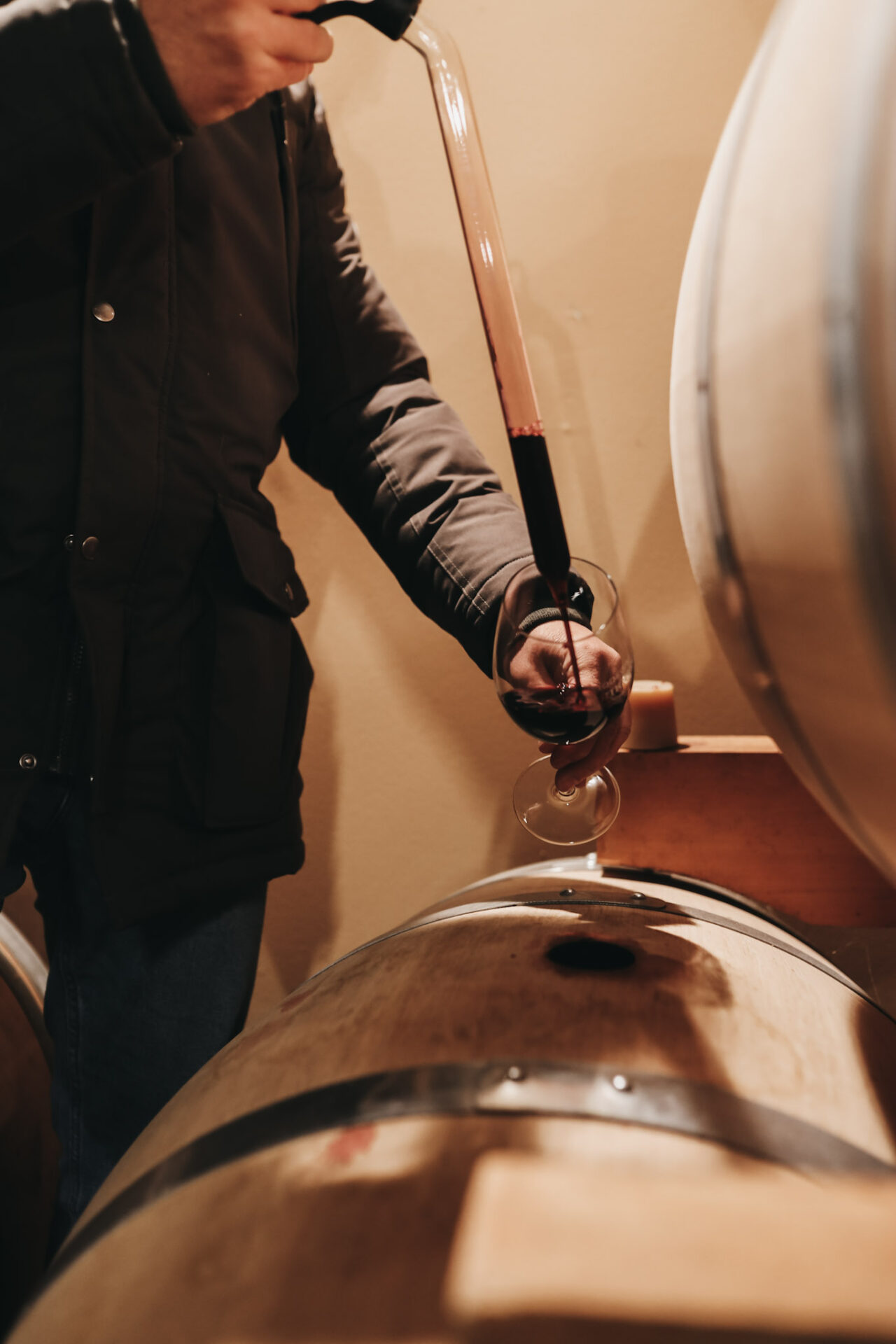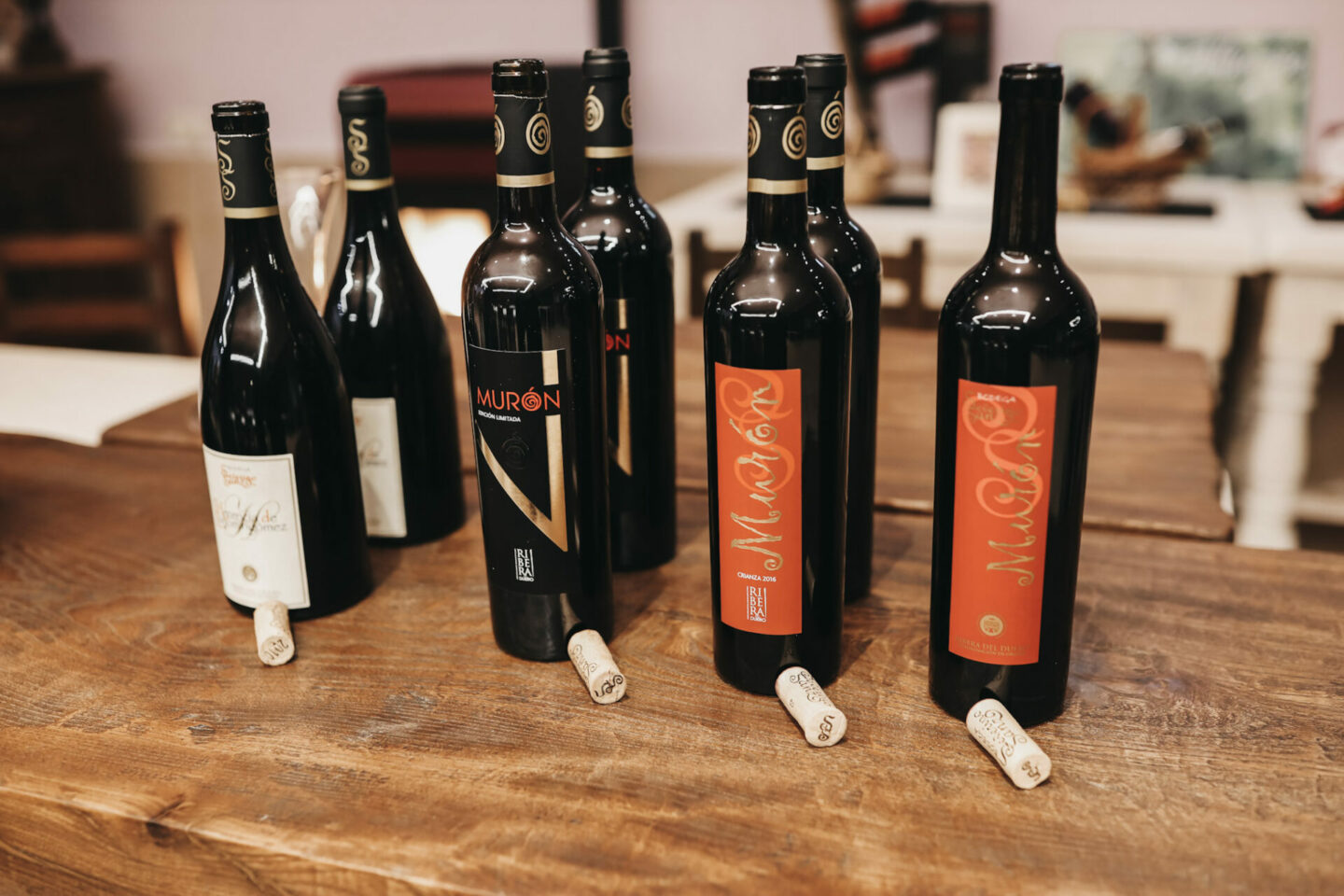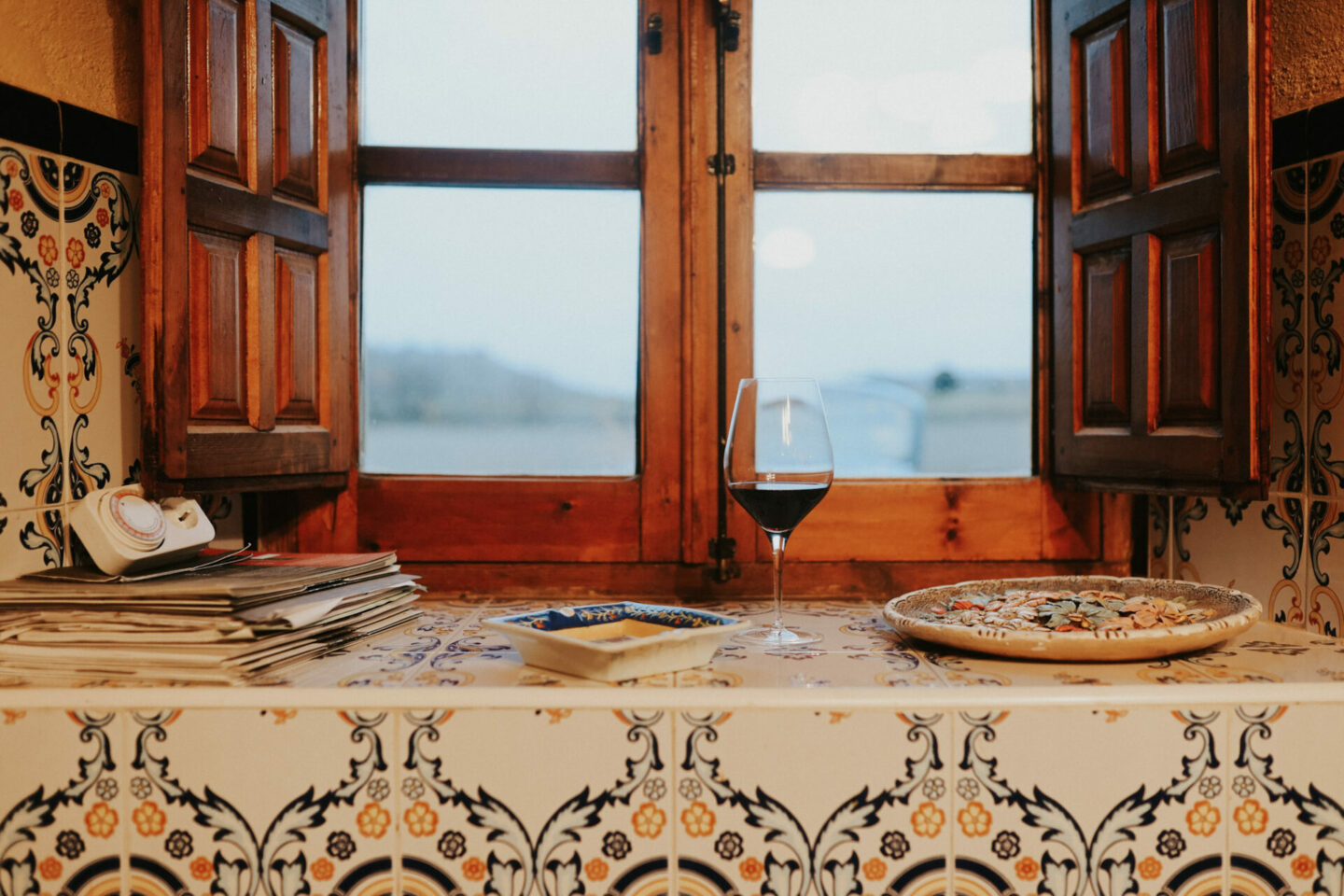
Spanish Red Wine
Spanish red wines present a remarkable blend of quality and affordability. They’re a particularly distinctive entry into the realm of European red wines.
You can find delicious fruit options for under $15. Alternatively, you can try expensive, robust red wines that are comparable to the finest collector’s wines globally. The diversity within Spanish red wines ensures a fulfilling journey for both the budget-conscious and those seeking premium, world-class selections.
A wide variety of grapes grow across Spain, including international favorites such as Cabernet Sauvignon and Merlot. With that said, however, there are five main red grapes that are used throughout Spain for Spanish Red Wine. We’ll dive into them below.
One important thing to note is that because Spain is an old world country, wines are typically labelled by region instead of grape variety (i.e. Rioja Reserva). More on this below!

Tempranillo
Spanish Tempranillo, often hailed as the “noble grape” of Spain, is a red varietal that takes center stage in the country’s winemaking narrative. Renowned for its versatility, Tempranillo thrives in regions like Rioja and Ribera del Duero, producing wines that balance vibrant fruitiness with a refined structure.
With notes of red berries, vanilla, and a hint of spice, Tempranillo wines captivate the palate.
Whether enjoyed as a young and lively expression or aged to perfection in Reserva or Gran Reserva styles, Tempranillo showcases the essence of Spanish winemaking craftsmanship.
Tasting Notes: Fruity, Elegant, Spicy, Structured
Regions: Rioja, Ribera del Duero, Valdepeñas, Tinto de Toro, La Mancha, Castilla-León, Extremadura
Average Cost: $10-20 for younger styles; $25+ for aged Reserva style wines
How Spanish Tempranillo Wines Are Labeled
Spanish Tempranillo wines are labeled based on various factors, including aging and quality classifications. The labeling system helps consumers understand the style and characteristics of the wine.
Here are common terms you might find on labels for Spanish Tempranillo wines:
Joven: This term signifies a young and typically unoaked wine. Joven wines, released early without extensive aging, showcase the freshness and primary fruit flavors of Tempranillo.
Crianza: Winemakers subject Crianza wines to a specific aging process, involving at least two years of maturation, with a minimum of six months in oak barrels. This process imparts additional complexity and structure to the wine.
Reserva: Reserva wines boast a longer aging period than Crianza wines. They age for at least three years, with a minimum of one year spent in oak barrels. Reserva wines often reveal more developed flavors and nuanced characteristics.
Gran Reserva: Winemakers classify Gran Reserva as the highest quality for Tempranillo wines. These wines undergo extensive aging, with a minimum of five years of maturation, and at least two years in oak barrels. Gran Reserva wines are renowned for their maturity, complexity, and the ability to age gracefully.

Garnacha
Spanish Garnacha, also known as Grenache, is a red grape variety that flourishes in the warm climate of regions like Priorat and Campo de Borja. Renowned for its versatility, Garnacha wines are often medium bodied and exhibit bold red fruit flavors, warmth, and a hint of spice.
Whether enjoyed as a single-varietal wine or as part of a blend, Spanish Garnacha showcases a delightful combination of richness and approachability.
Tasting Notes: Strawberry, Red Fruit, Black Tea, Herbal Notes
Regions: Calatayud, Somotano, Navarra, Cariñena, Campo de Borja, La Mancha
Average Cost: $12-35
Monastrell (Mourvèdre)
Spanish Monastrell, also known as Mourvèdre, is a red grape variety that thrives in regions like Jumilla and Yecla, basking in the sun-drenched landscapes of Spain. Recognized for its full-bodied and robust character, Monastrell wines often boast rich dark fruit flavors, a touch of earthiness, and a velvety texture. This grape’s wines embody a distinctive profile that captures the essence of the Mediterranean terroir.
Tasting Notes: Blackberry jam, milk chocolate, earth, smoke
Regions: Jumilla, Alicante, Valencia, Bullas, La Mancha, Yecla
Average Cost: $10-20

Mencia
Spanish Mencia is an elegant red grape variety predominantly found in Spain and Porgutal, especially in the Dão region.
Known for producing wines with finesse and aromatic complexity, Mencia delights the palate with vibrant red fruit flavors and subtle floral notes. Wine lovers have even compared it to Grand Cru Red Burgundy because of its tasting notes!
The wines often reflect the unique terroir of Bierzo, showcasing a harmonious balance that makes Mencia a captivating choice for those seeking distinctive Spanish reds.
Tasting Notes: Wild berries, violet blossoms, mineral undertones, pomegranates
Regions: Bierzo, Ribeira Sacra, Monterrei, Valdeorras
Average Cost: $20-30
Bobal
Spanish Bobal, a grape variety indigenous to the Utiel-Requena region, showcases a unique and compelling character.
Known for its dark and rustic charm, Bobal wines often exhibit robust flavors of dark berries and a distinctive earthiness. With a medium to full-bodied profile, Bobal wines can captivate the palate with their firm tannins and a touch of spiciness.
As a rising star in Spanish winemaking, Bobal offers a fascinating exploration for those seeking bold and authentic expressions of the Iberian terroir.
Tasting Notes: Black cherry, cocoa powder, violet blossoms, sage
Regions: Utiel-Requena, Manchuela
Average Cost: $20-30
A Note on Rioja Wines
Perhaps the most famous Spanish red wine, Rioja is renowned for Tempranillo-base wines hailing from northern Spain, specifically in the Ebro River valley.
The Rioja wine region is divided into three subzones: Rioja Alta (known for higher elevation and cooler climate), Rioja Alavesa (characterized by limestone soils and wines with aromatic intensity), and Rioja Oriental (wines from this region tend to be robust, with ripe fruit flavors).
